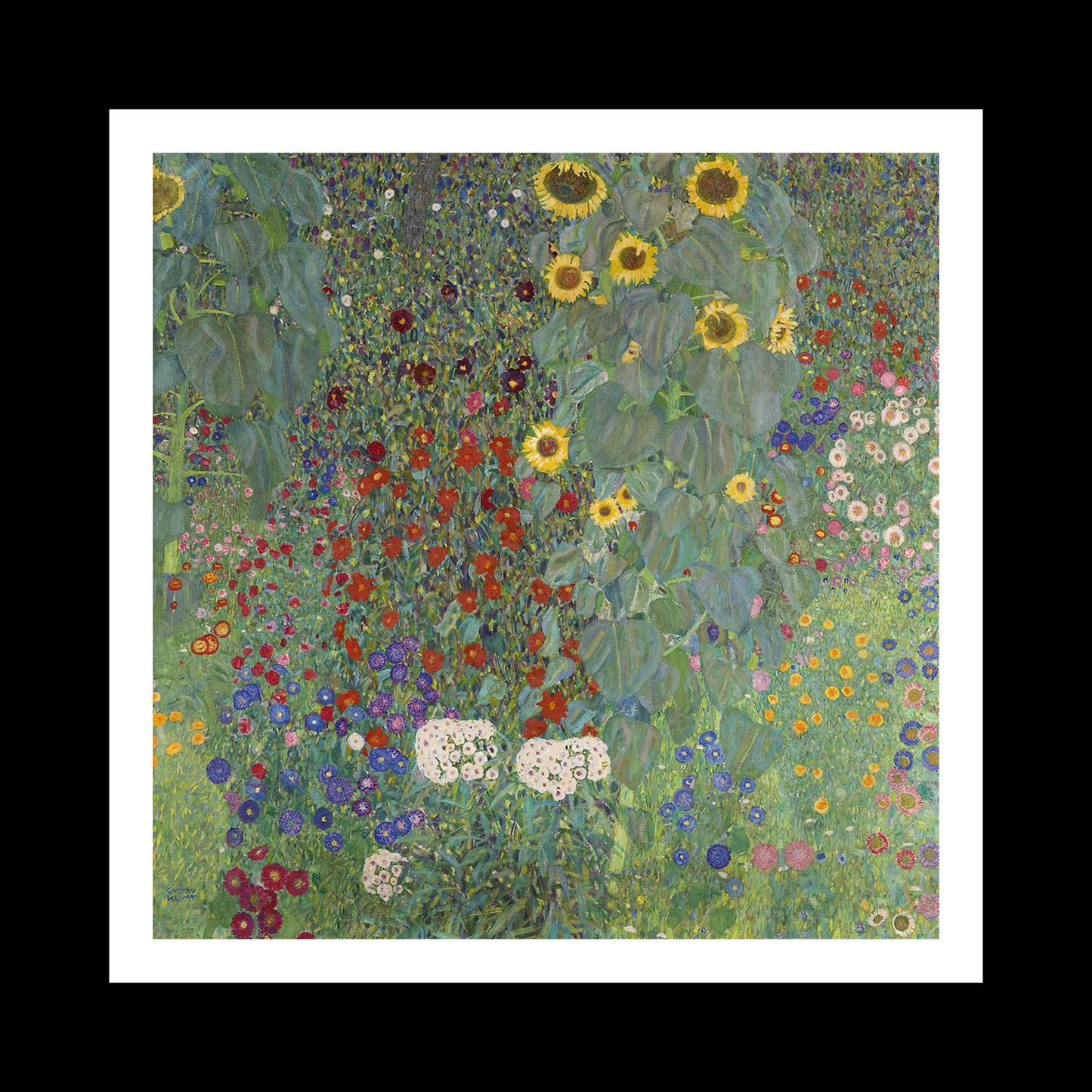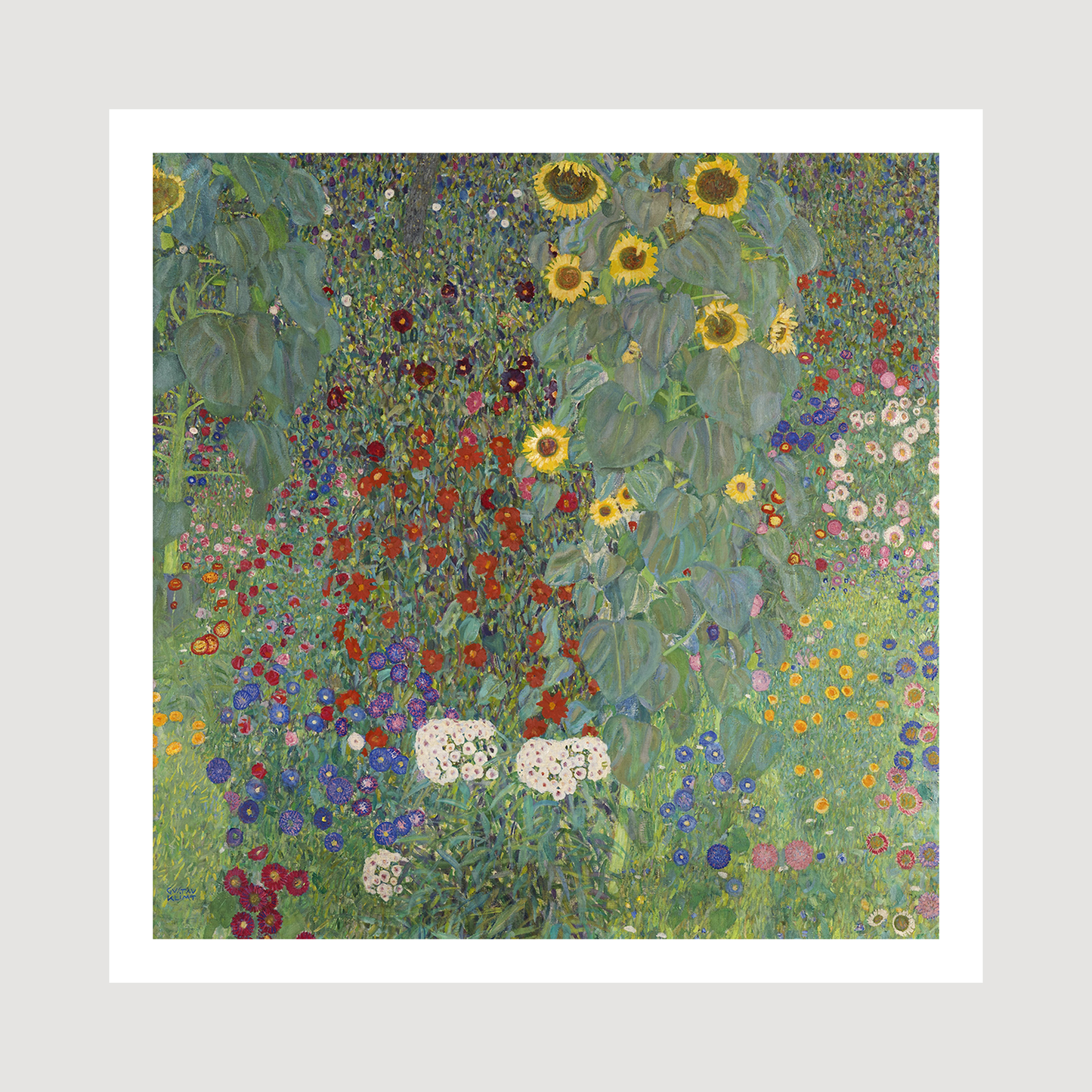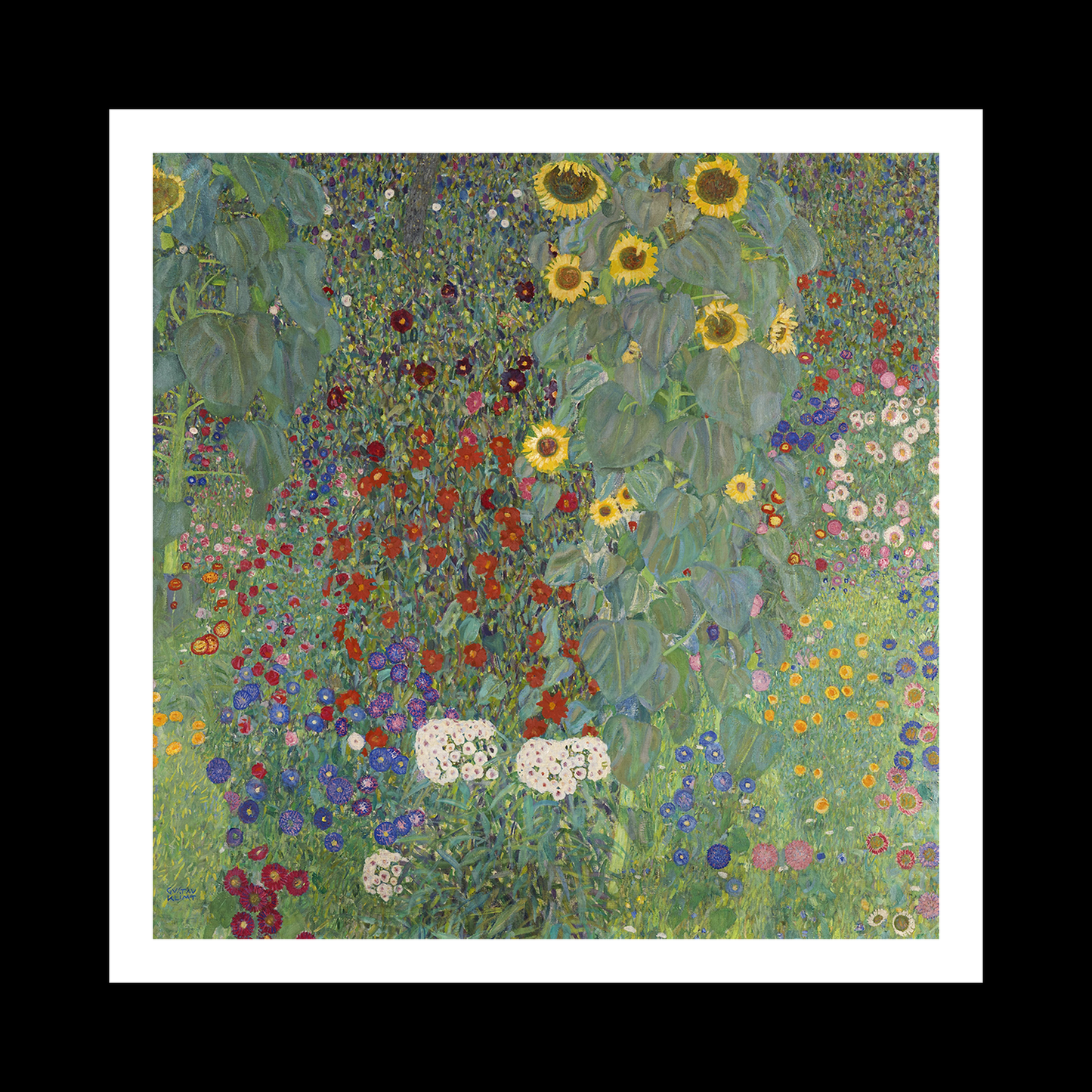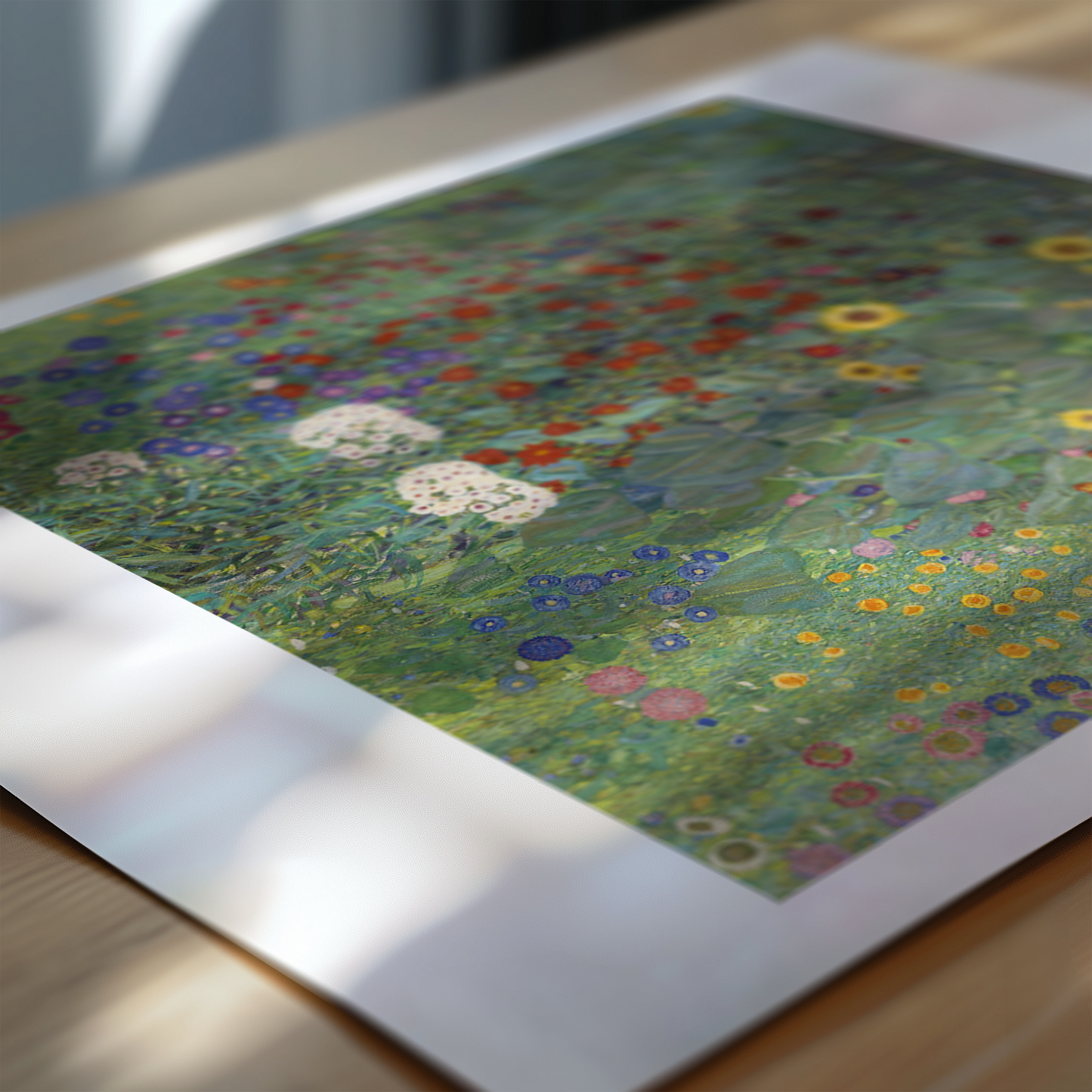1
/
of
6
Farm Garden Sunflowers
Farm Garden Sunflowers
Regular price
£12.45 GBP
Regular price
Sale price
£12.45 GBP
Taxes included.
Quantity
Couldn't load pickup availability
Farm Garden with Sunflowers (1907) showcases Gustav Klimt's distinctive departure from his golden period, embracing a more naturalistic approach while maintaining his characteristic decorative style. The painting presents a vibrant garden scene dominated by towering sunflowers, their yellow blooms reaching skyward amidst a tapestry of colourful flowers and foliage. Klimt's unique pointillist technique creates a mosaic-like effect, with small, distinct brushstrokes building up layers of rich colour and texture.
This piece reflects Klimt's lesser-known fascination with nature and gardens, particularly during his summer retreats to Lake Attersee in Austria. Unlike his more formal portraits, this work captures the spontaneous, wild beauty of a cottage garden, demonstrating his ability to transform everyday scenes into extraordinary visual experiences. The painting marks a significant shift in his artistic journey, showing how he adapted the decorative principles of Art Nouveau to natural subjects.
The composition reveals Klimt's masterful understanding of colour and pattern, with the sunflowers serving as vertical elements that guide the viewer's eye upward through the canvas. The dense arrangement of flowers creates a sense of abundance and vitality, while the seemingly random placement of blooms suggests the natural chaos of a working garden. This painting emerged during a period when European artists were increasingly influenced by Japanese art and its approach to natural subjects, evident in Klimt's flattened perspective and detailed observation of plant forms.
This work reflects the early 20th-century movement toward modernism, as artists began breaking free from traditional academic constraints to explore new ways of representing the world around them. Klimt's interpretation of this humble garden scene demonstrates his ability to find beauty and complexity in the ordinary, transforming a simple subject into a celebration of colour, pattern, and life itself.
View full details
This piece reflects Klimt's lesser-known fascination with nature and gardens, particularly during his summer retreats to Lake Attersee in Austria. Unlike his more formal portraits, this work captures the spontaneous, wild beauty of a cottage garden, demonstrating his ability to transform everyday scenes into extraordinary visual experiences. The painting marks a significant shift in his artistic journey, showing how he adapted the decorative principles of Art Nouveau to natural subjects.
The composition reveals Klimt's masterful understanding of colour and pattern, with the sunflowers serving as vertical elements that guide the viewer's eye upward through the canvas. The dense arrangement of flowers creates a sense of abundance and vitality, while the seemingly random placement of blooms suggests the natural chaos of a working garden. This painting emerged during a period when European artists were increasingly influenced by Japanese art and its approach to natural subjects, evident in Klimt's flattened perspective and detailed observation of plant forms.
This work reflects the early 20th-century movement toward modernism, as artists began breaking free from traditional academic constraints to explore new ways of representing the world around them. Klimt's interpretation of this humble garden scene demonstrates his ability to find beauty and complexity in the ordinary, transforming a simple subject into a celebration of colour, pattern, and life itself.











